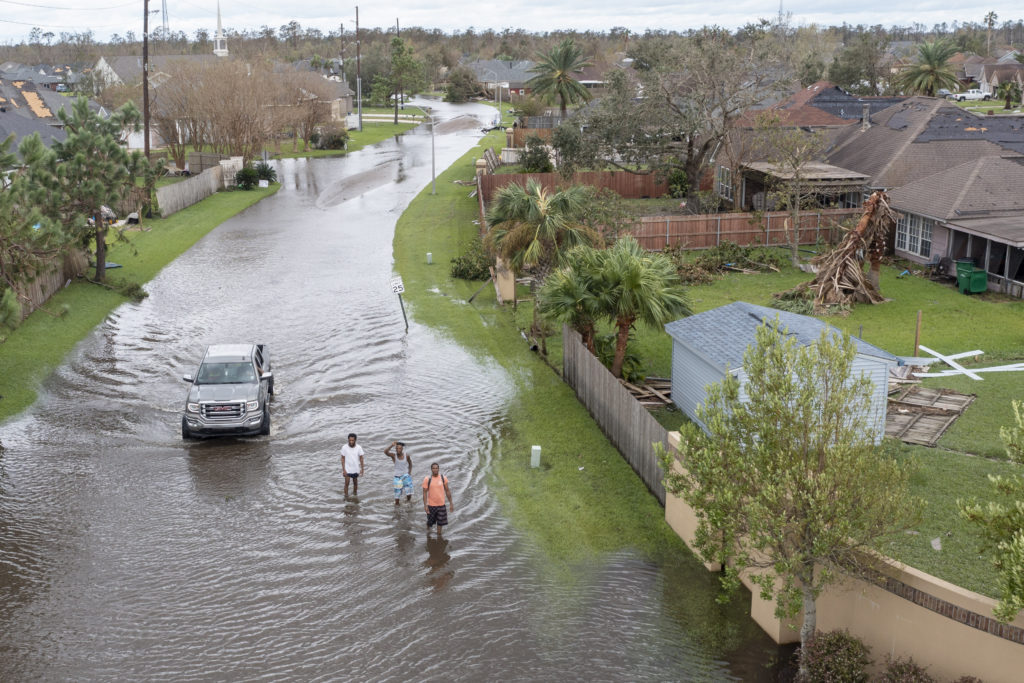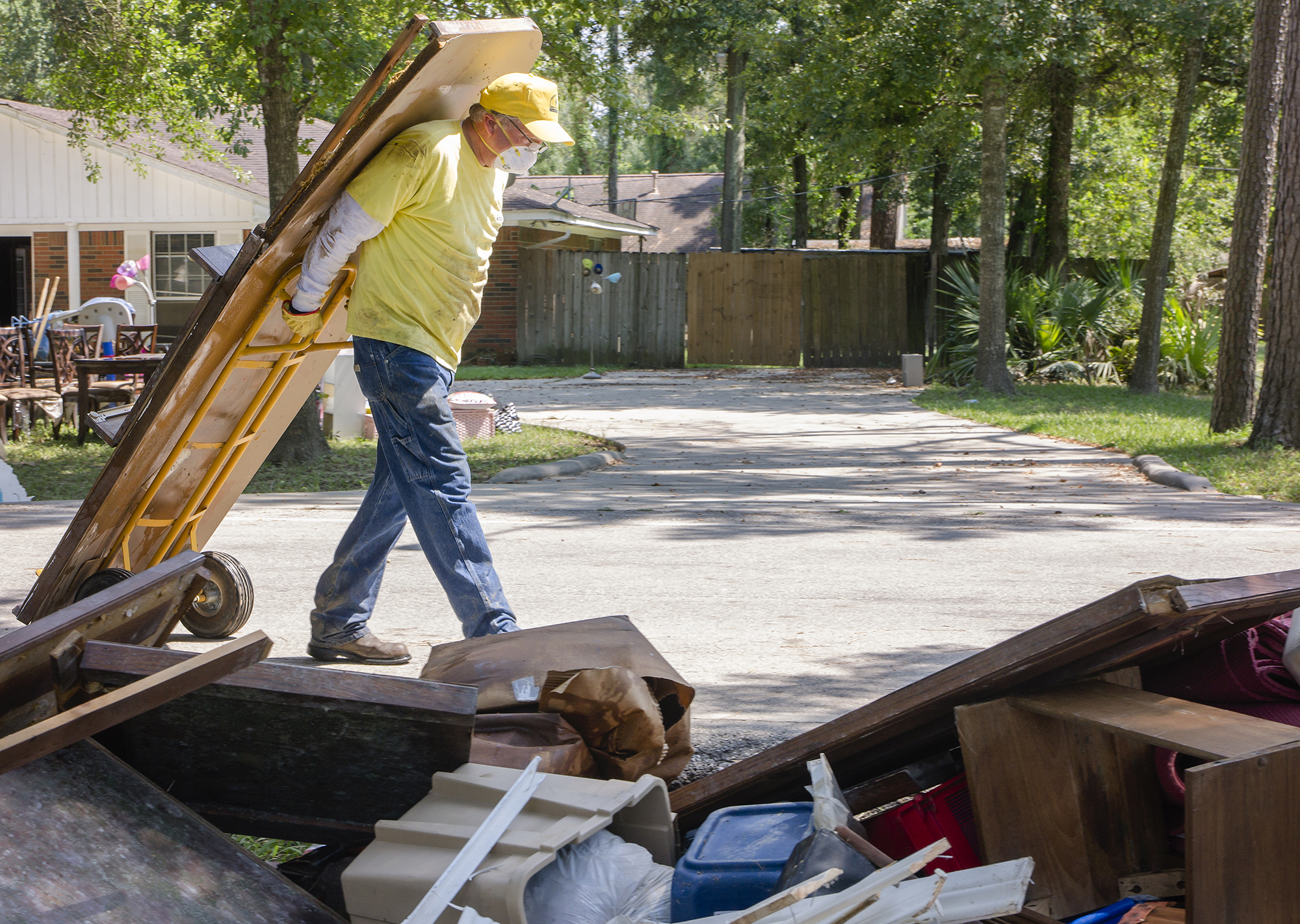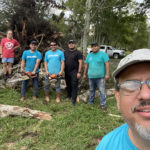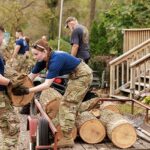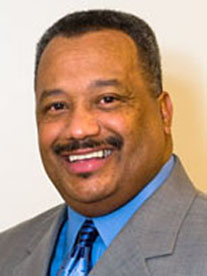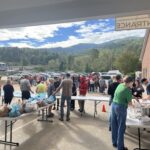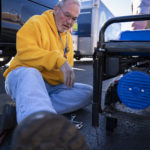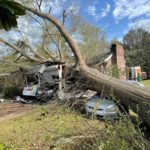
LaPLACE, La. (AP) – Debbie Greco and her family cowered on a stairway landing as Hurricane Ida sent 4 feet of muddy water rushing into her home in LaPlace along the west side of Lake Pontchartrain.
She and her son had safely rescued her elderly parents from their home down the street Sunday (Aug. 29). But now they prayed the roof would not collapse on all of them.
“God blessed us that we all survived,” she said Monday (Aug. 30) after they were rescued by boat.
While New Orleans largely escaped catastrophic flooding during the storm, LaPlace and other nearby communities were not so lucky.
A Send Relief semi-truck is dropping off supplies in West, Miss., and Ruston, La., today (Aug. 31) to support the recovery efforts of Southern Baptist Disaster Relief (SBDR) in response to the storm. Those supplies include meals, generators, rolls of temporary roofing, flood recovery supplies and other resources.
A Send Relief spokesperson told Baptist Press two SBDR sites are expected to be up and running today, one in Gonzales, La., and one in Gramercy, La. At least three more are expected to be operational by the end of the week, providing meals for survivors and serving as a hub for SBDR’s efforts in those cities and the surrounding communities.
SBDR volunteers from several states – including Alabama, Georgia, Illinois, Tennessee and Oklahoma are either on standby or have already sent teams or equipment. Don Williams, disaster relief director for Oklahoma Baptists, said that state will provide a mobile kitchen and a team to run it.
“We are ready to serve,” Williams told the Baptist Messenger. “Oklahoma Baptist DR volunteers have been trained and prepared to serve those affected by this hurricane. We praise the Lord that we are able to serve Him and share Christ to those who need to hear the Gospel.”
Southern Baptists of Texas volunteers had deployed even before the storm hit. A command post and incident management team left Texas Sunday for the Tall Timbers Baptist Conference Center at Forest Hill, La., where they will assist Louisiana Baptist DR in coordinating statewide efforts, the Texan reported.
A mass feeding unit from the Unity Baptist Association in Lufkin, Texas, was scheduled to leave today to support Salvation Army efforts at the Lamar Dixon Expo Center in Gonzales, La. The feeding volunteers will be joined by an SBTC DR shower and laundry unit.
In LaPlace, La., Ida tore roofs off homes and flooded entire subdivisions. Residents retreated to their second floors or attics and took to social media to plead for boat rescues as the water rose.
That assistance came on Monday, when rescue trucks and boats on trailers took people to safety. Other residents got to dry ground by wading through knee-deep water carrying pets and other belongings.
Dozens of people pulled pieces of chimneys, gutters and other parts of their homes to the curb.
“My dreams are destroyed,” said John Vincent, 65, another LaPlace resident. “I mean, at my age I’ve got to start all over.”
New Orleans’ levee system — overhauled at a cost of billions of dollars after Hurricane Katrina breached it — held up against Ida’s rampage. Ida struck on the 16th anniversary of Katrina, which devastated the city and was blamed for 1,800 deaths in 2005.
But in LaPlace, work only recently began on a long-awaited levee project that isn’t expected to be completed until 2024.
The working-class city of close to 30,000 people sits between the Mississippi River and Lake Pontchartrain, a 640-square mile (1,658-square kilometer) estuary. It’s part of a stretch of communities along the river between metro New Orleans and Baton Rouge that is home to major chemical companies and refineries.
Flooding also devastated the community of Crown Point about 17 miles south of New Orleans, where rescue crews deployed high-water trucks and swamp boats. Wayne Templet got friends and pets in the area to safety in his truck and said the storm was “adding stress to an already stressful life.”
In Lafitte, a small community south of Crown Point, even homes on stilts were flooded and residents had to use boats to navigate the submerged streets and retrieve their belongings. And in Houma, a city of about 30,000 people southwest of New Orleans, Ida’s winds had stripped the roofs off of businesses, apartment complexes and single-family homes.
On Grand Isle, the 40 residents, firefighters and police officers who rode out the storm remain stuck on the barrier island, but a helicopter flew over on Monday and several firefighters working to clear a road gave the people on board a thumbs up, Jefferson Parish Sheriff Joe Lopinto said.
Ida made landfall just to the west of Grand Isle with a wind gust recorded at 172 mph and seawater swamped the island. The storm then moved up Highway 1 – the only road to the mainland, and the ribbon of asphalt through low-lying swamps remains impassible.
The sheriff said he can’t say everyone on the island about 55 miles south of New Orleans is accounted for, but the thumbs-up made him feel better. Emergency officials are working as fast as they can to reach them in person.
Louisiana Gov. John Bel Edwards said Monday that local, state and federal boats, high water vehicles and aircraft rescued 671 people. The state would soon transition to a door-to-door search of the hardest-hit areas to determine whether anyone needs assistance, he said.
Private groups have also helped. Vincent Ochello and Evan Michel checked on their neighbors in Lafitte who didn’t evacuate. Michel has been driving his boat while Ochello broadcasts live on Facebook.
“People giving me address that they ain’t heard from people. Everybody’s worried about y’all, so come and check on y’all,” Ochello said.
Many homes that did not flood or suffer other damage were still without electricity, and officials warned it could be weeks before the power grid is repaired.
More than 1 million customers in Louisiana and Mississippi – including all of New Orleans – were left in the dark. Eighteen water systems were also out, impacting more than 312,000 people, and an additional 14 systems affecting another 329,000 people were under boil water advisories, Edwards said.
He urged evacuees not to try to return home, citing the widespread power outages, road closures and other dangerous conditions.
“There are an awful lot of unknowns right now. There are certainly more questions than answers,” he said. “I can’t tell you when power is going to be restored. I can’t tell you when all the debris is going to be cleaned up and repairs made and so forth.”
Some residents vowed to rebuild after the storm, but Greco and her father, Fred Carmouche, said they are tired of the constant hurricane fears on the Gulf Coast.
“When I rebuild this I’m out of here. I’m done with Louisiana,” Carmouche, 85, said.
From The Associated Press. May not be republished. AP contributors include Stacey Plaisance in Crown Point, David J. Phillip in Lafitte, Kevin McGill in New Orleans, Julie Walker in New York, Jeff Martin in Marietta, Georgia, and Sudhin Thanawala in Atlanta.
